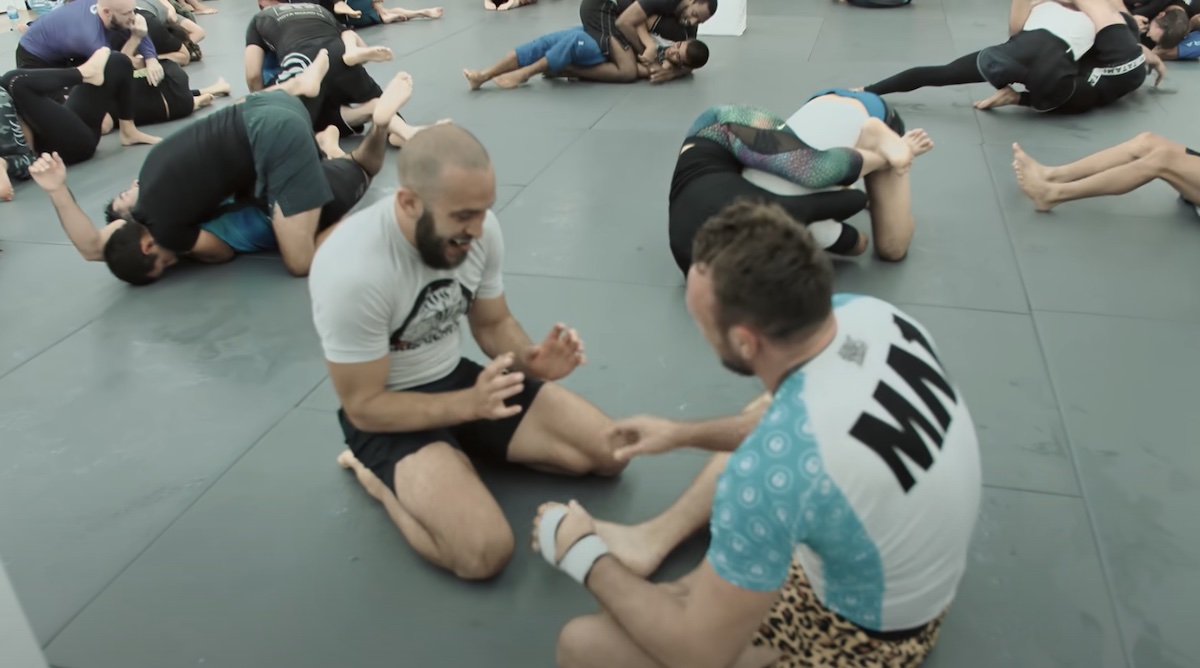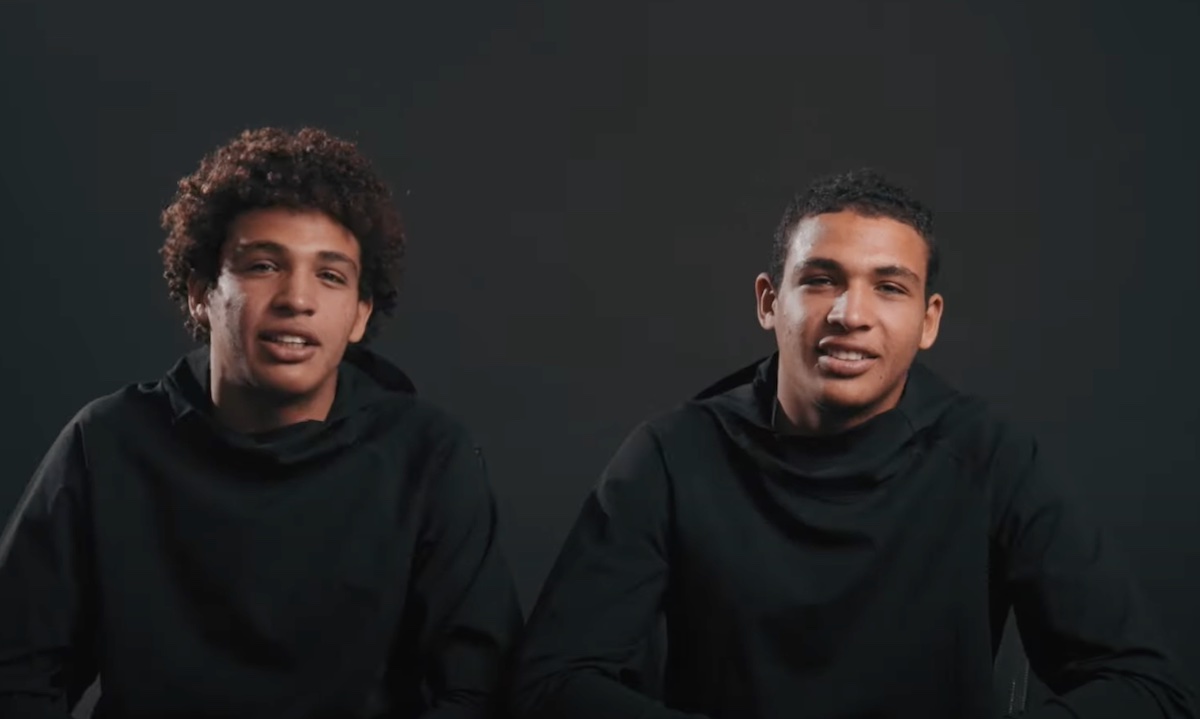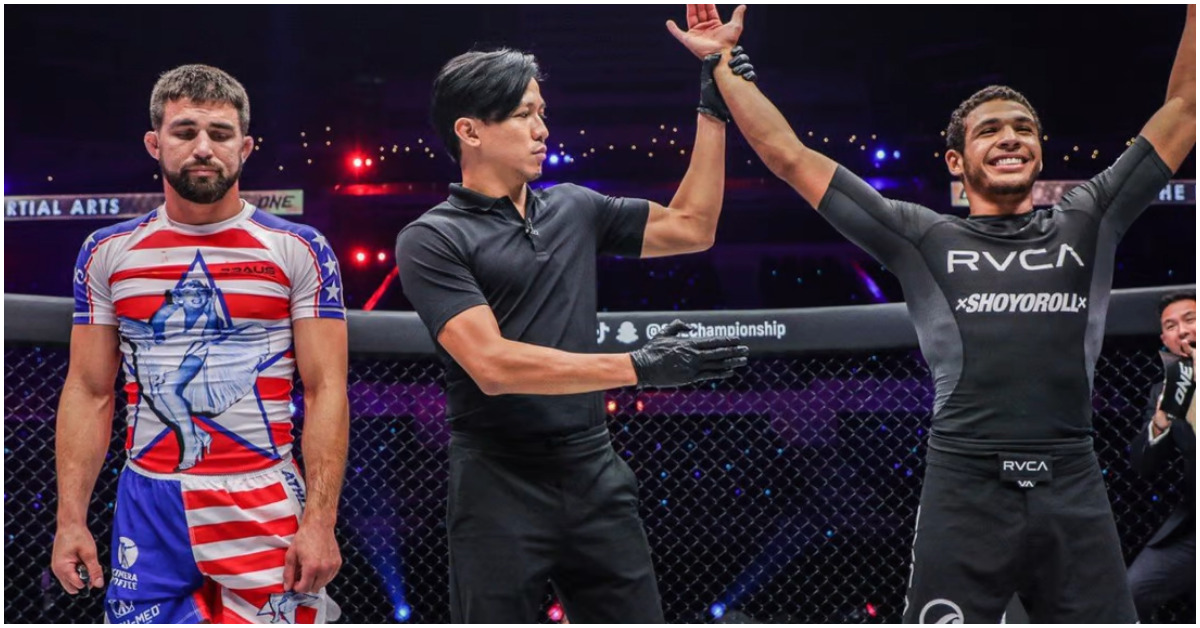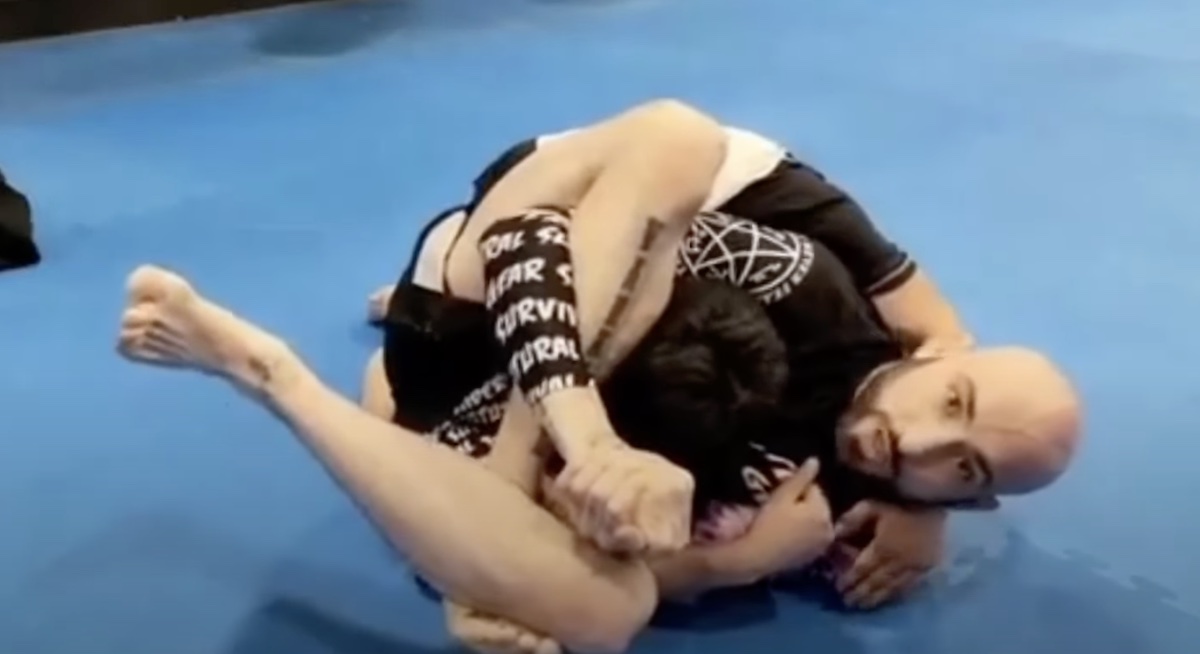
If you practice Jiu Jitsu, you probably know what open mat is and love it. This is a beloved training session amongst grapplers, where they get to hang out with their friends and train.
Some may see open mats as hang out sessions, but they are extremely beneficial to attend. Here are some of the numerous benefits of training at open mats and why you should attend them.
What is an open mat?
Open mat is a time a BJJ schools sets a side for students to train when there are no scheduled classes. This training session usually takes place on the weekends or whenever the gym is closed for a holiday.
A normal open mat training session usually lasts between 1-2 two hours. Just enough time to break a good sweat before students go back to spend time with their families.
There is no structure or lesson and the students are free to practice how they want. However, there is generally a black belt or high belt present to ensure the rules of the gym are being followed.
The benefits of open mat
There are numerous benefits to attending open mats. Here are the main reasons why you should consider hitting up these training sessions.
Get extra training in
Of course, the most obvious benefit of attending open mat is that you get the chance to get extra training in. Even on days where there isn’t an official Jiu Jitsu class, many students still want to train.
That is why nearly every gym sets a side one day a week for free training. Letting their students come in to free roll or work on their technique.
It’s highly recommended that you hit these training sessions if you’re serious about improving your Jiu Jitsu skills.
Make up for missed training time
There are certain weeks when your job and personal life get in the way of your training. That’s why some BJJ gyms will set aside a certain day of the week to have an open mat training session.
Just as a way to let students that missed training for whatever reason can get something in that week.
Train for a competition
Open mat is extremely beneficial if you’re in the middle of training for a BJJ competition. During these free training sessions, those training for a competition can just go all out.
Training nonstop and rolling with all of your teammates to break a sweat and tire yourself out. Getting open mats in along with your regular training during the week will get you prepared for your competition.
They may even help you bring home a gold medal.
Drilling
Most grapplers come to open mats to roll, but there are others that come to these training sessions to drill. Getting this extra time to drill can infinitely improve your game by focusing on different movements.
Some of the drills you can do during an open mat include:
- Guard Passing
- Positional Escapes
- Takedowns
- Submissions
- Submission Defenses
- Transitions
- Sweeps
Trying new moves
This extra training time gives you the opportunity to expand your game and try something new. Trying different moves that you don’t usually try in your normal BJJ game.
Doing anything from working on your guard if you’re a guard passer or vice versa. Maybe even trying a new submission or sweep.
The possibilities are endless and you should take this extra time to add another facet to your game.
Fix your technique
Not only are open mats extra time for you to roll, but also a time to fix your technique. If you’re having a problem with a certain technique, you can ask your instructor or teammates for advice.
Pick their brains and ask them how to correctly do a move that you’re having problems with. They’ll walk you through how to do the technique, then you can drill it until you get the move down.
Taking advantage of open mats to fix your technique is beneficial to your progression in Jiu Jitsu.
Visit other BJJ schools
Not only do open mats give you the chance to get extra training in, but also to visit other BJJ schools. You may have friends in other academies that you only get to train with sometimes.
By going to your friend’s Jiu Jitsu school, you get to train with a brand new group of people. New training partners that don’t know what type of game you play and you don’t know what they play.
Giving you a chance to see how your BJJ game stacks up against grapplers from another academy. You’ll find out what aspects of your Jiu Jitsu are good and other parts that you need to work on.
Socialize with your friends
For most of us that train, our circle of friends are the people we train with. We spend most of our day at work and then meet up with them a few hours a week.
Attending open mats can give you an excuse to go socialize with your friends. Attending these training sessions every week with your friends is great for your mental health and will make good memories.
Having fun
Arguably the best thing about an open mat session is that they’re just fun to attend. Jiu Jitsu is a fun hobby that is really enjoyable to participate in.
Open mat gives you the chance to hang loose and just have a good time training the martial art you enjoy. There’s nothing more fun than a good training session at an open mat.
Argument against open mat
While attending open mat has numerous benefits, there are some BJJ professors that aren’t fans of this type of training. Not that they are against free training, but the choices a small majority of their students make.
Some BJJ students prefer to just have fun and tend to only show up for non formal training sessions. Training sessions, where students just free roll and joke around.
This is really the only negative against open mats, but it’s a valid complaint. There are some BJJ students who need to take their training more seriously and attend more classes than just open mats.
Go hit up an open mat
If you’re serious about your BJJ training, do yourself a favor and attend different open mats. They give you extra mat time to not only improve your Jiu Jitsu skills, but also your health. You also get to spend more time with your friends and practice the martial art you love.
 The Ruotolo brothers, Kade and Tye are two of the most talented young stars on the Jiu Jitsu scene today. Kade and Tye have been making waves in BJJ even before they were teens. Now as young black belts, they are positioned to set the Jiu Jitsu world on fire and become champions. Here is […]
The Ruotolo brothers, Kade and Tye are two of the most talented young stars on the Jiu Jitsu scene today. Kade and Tye have been making waves in BJJ even before they were teens. Now as young black belts, they are positioned to set the Jiu Jitsu world on fire and become champions. Here is […] BJJ prodigy Tye Ruotolo has his eyes set on competing in the sport of mixed martial arts next. Making his submission grappling debut in ONE Championship, Tye Ruotolo managed to tap out the legendary Garry Tonon at ONE Championship 157. In just two minutes of the contest, Ruotolo displayed an exhibition of superior movement before […]
BJJ prodigy Tye Ruotolo has his eyes set on competing in the sport of mixed martial arts next. Making his submission grappling debut in ONE Championship, Tye Ruotolo managed to tap out the legendary Garry Tonon at ONE Championship 157. In just two minutes of the contest, Ruotolo displayed an exhibition of superior movement before […] TAPS OUT Garry Tonon via D'Arce choke in under two minutes
TAPS OUT Garry Tonon via D'Arce choke in under two minutes 
 The buggy choke is the latest fade technique to hit the Jiu Jitsu world. Since it was introduced, the buggy choke has been attempted in everything from Jiu Jitsu competitions and MMA. It has caught on like wildfire and now just about everyone is trying to do the buggy choke. Since everyone is going for […]
The buggy choke is the latest fade technique to hit the Jiu Jitsu world. Since it was introduced, the buggy choke has been attempted in everything from Jiu Jitsu competitions and MMA. It has caught on like wildfire and now just about everyone is trying to do the buggy choke. Since everyone is going for […]